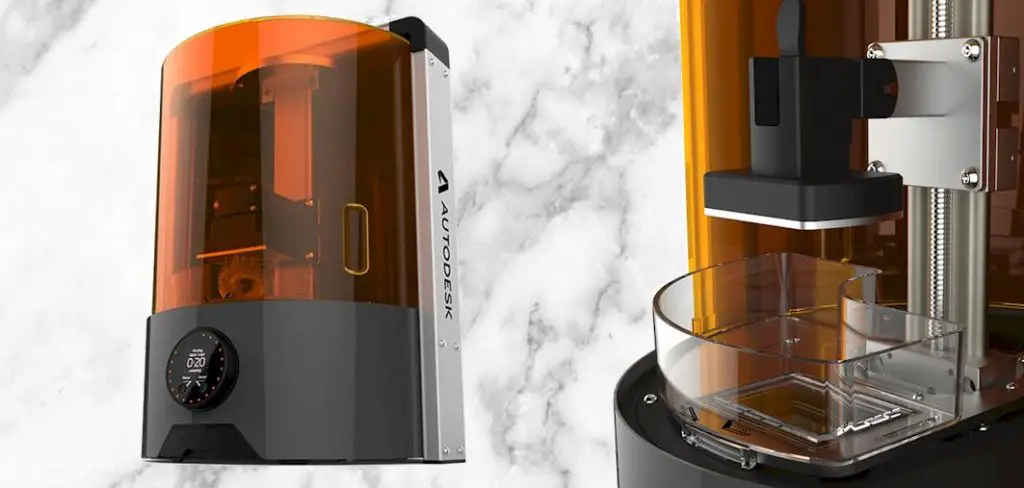There are tons of 3D printers available on the market in different sizes and with different quality. But often, I have noticed most of these fail to translate the size or the specification to the price tag. Today, I will discuss the Ember 3D Printer review, a product that seems to have a lot of potentials and justifies the size and specification. There has been a lot of hype around this compact 3D printer since it was first launched in 2014. Now, can this printer compete against modern 3D printers? Let’s find out.
Before we dive any deeper, I would like to show you the rating of the Ember 3D printer for different aspects. You can have a general idea about the product from here.
Ember 3D Printer Performance Ratings
-
Ease-of-Use
-
Features
-
Value for Money
-
Durability
-
Looks
Summary
Ember 3D Printer is a product that has a lot of potential and justifies the size and specification.
Ember 3D Printer Specifications

A detailed understanding of products is essential to using a 3D printer properly. And how do you understand that? By knowing the technical specification. The specification of the Ember 3D printer will give you a brief overview of its performance and capability.
- Printer Type: SLA (Stereolithography)
- Supported Filament: Different Resins
- XY Accuracy: 0.05 mm
- Extruder: Dual
- Print Speed: 18mm per hour
- Build Volume: 64 x 40 x 134 mm
- Connectivity: USB, Ethernet, Wi-Fi
- Print resolution: 10 to 100 Micron
The specifications above should give you a fair amount of knowledge about the product. However, the advantages and disadvantages of this product are still unknown. So, does the specification translate to performance? That’s what we are going to find next.
Ember 3D Printer Pros and Cons
No 3D printer out there is free of flaws, and the Ember 3D printer is no different. In this segment, I’ll describe the pros and cons of this product. Depending on this segment, you can determine whether the product aligns with your priorities.
Pros
- The printing resolution of the Ember 3D printer is truly impressive. This printer can print at 50 microns on the X-axis and 10 microns on the Y-axis.
- The printer has a special resin with a rotatable head. It allows a faster [ringing without compromising the quality.
- Compatibility with different third part resins is a significant advantage of the Ember 3D printer. Overall, it makes up for a better user experience.
- As a printer released seven years ago, the Ember 3D printer is relatively fast. This printer can easily print 18 mm per hour.
- Open-sourcing is one of the favorite features of the Ember 3D printer for enthusiasts. You can easily modify or customize the internal options and settings as you want.
Cons
- The small build volume can be an issue for a lot of people. Especially considering the price, it’s hard to compare with other large volume 3D printers availed on today’s market.
- Ember 3D was discontinued back in 2017. So, finding proper warranty support can be challenging. If you want to safeguard your purchase, you have to find a reseller who will provide you with at least one year warranty.
Related: Top 7 3D printers to use for flexible filament
Ember 3D Printer Overview
What is the 3D printer like physically?
At first glance, you’ll fall in love with the Ember 3D printer. This 3D printer is quite expensive, and the build quality and look are everything you would expect from a premium printer. The construction is made of high-quality transparent plastic, ABS, and aluminum frame. The printer has round edges at the top, and a LED display is located at the bottom of the front panel. From there, you can easily handle and overlook all the printer’s operations. All the printing activities take place inside the enclosed chamber.
How is the Ember 3D Printer used?
Operating a 3D printer needs brief knowledge about 3D printing and the machine itself. That’s why many newcomers in the scene often struggle to assemble and set up the printer. However, you are free from that tension as the Ember 3D printer has one of the simplest interfaces in the business.
Ember 3D Printer Key features and performances
Here I have discussed different aspects of the Ember 3D printer and rated them accordingly. This segment should answer all your question regarding this printer.
Print performance
Ember 3D printer uses a technique somewhat different from conventional 3D printers. Instead of filament print, this printer uses photo-sensitive resins to print objects out. DLP projection cures the resin using UV light, generating the highest quality print with minimum material waste. Also, if you are looking for fast prototyping for commercial use, the Ember 3D printer is perfect.
Print volume
Arguably the biggest drawback of the Ember 3D printer is its small print volume. A print volume of 64 x 40 x 134 mm for the price tag will surely be a deal-breaker for many. Additionally, the extra cost of SLA resins compared to regular filaments makes it an even bigger problem. However, it appears to me that Ember 3D never really wanted to be a large volume 3D printer. Its main purpose is to quick mass production of smaller objects.
Durability
The materials used for the construction of the Ember 3D printer are high-quality. So, you don’t have to worry about the durability of this 3D printer. Durable transparent plastic with an aluminum frame at the back end gives it a pretty solid structure. As the durability is pretty decent, you won’t have to worry about any breakage. Therefore the repair or replacement cost won’t ramp up.
Assembly and Use
The Ember 3D printer comes on a plug-and-play basis to make it readily available for everyone, starting from experts to beginners. There is no complicated installation like barebones kits. You have to get the 3D printer out of the box and plug it in. Also, the user experience is very simple, with convenient control available at the front LED display.
Final Verdict
There are more than a few features I highly appreciate about the Ember 3D printer. If you are looking for a fast and small build volume 3D printer for commercial use, then look no further; this 3D printer is the perfect choice for you. However, before making the purchase decision, make sure you check other options available on the market.
Contents

